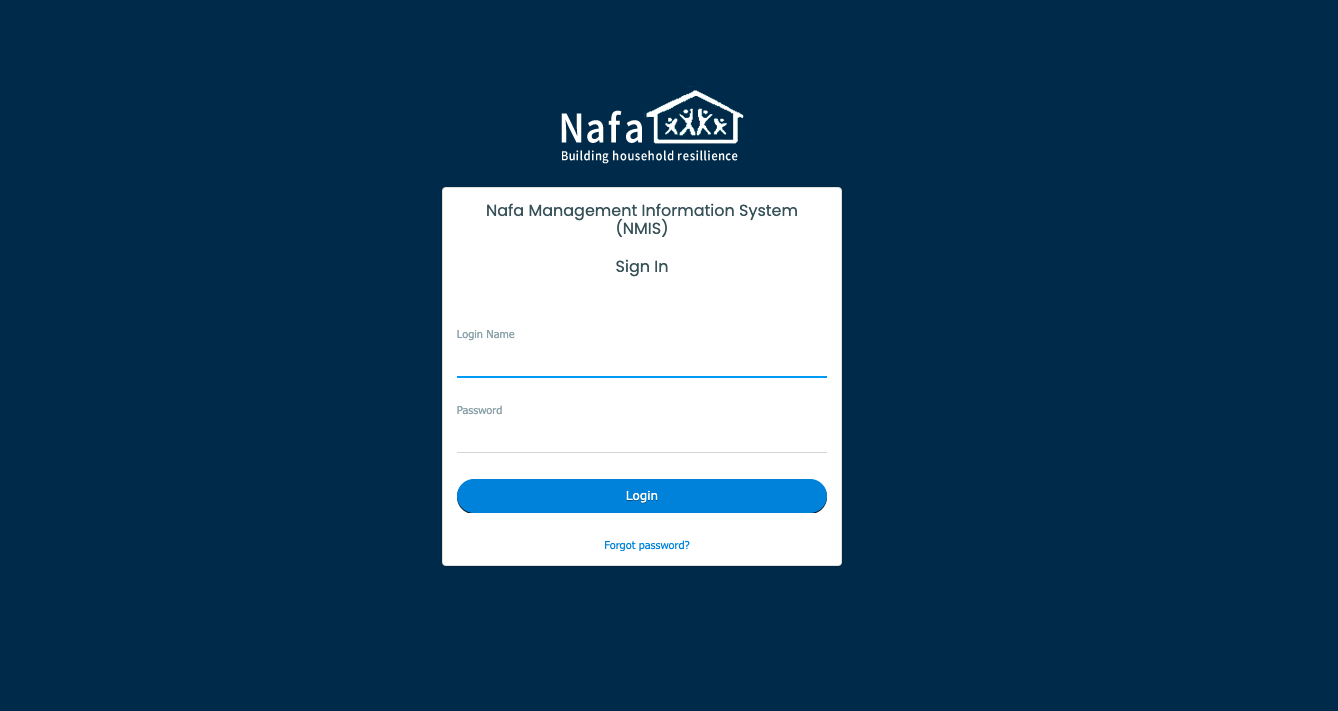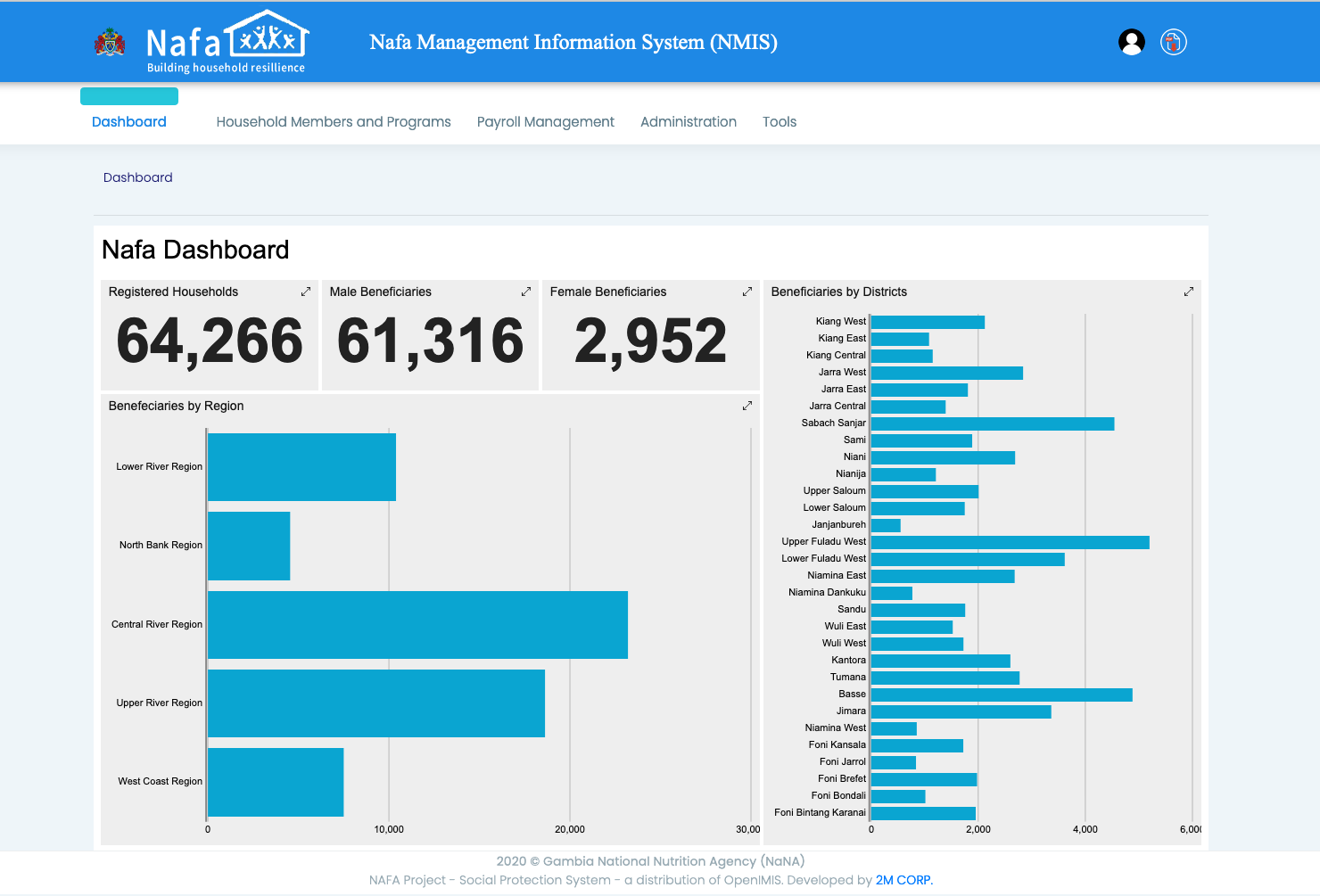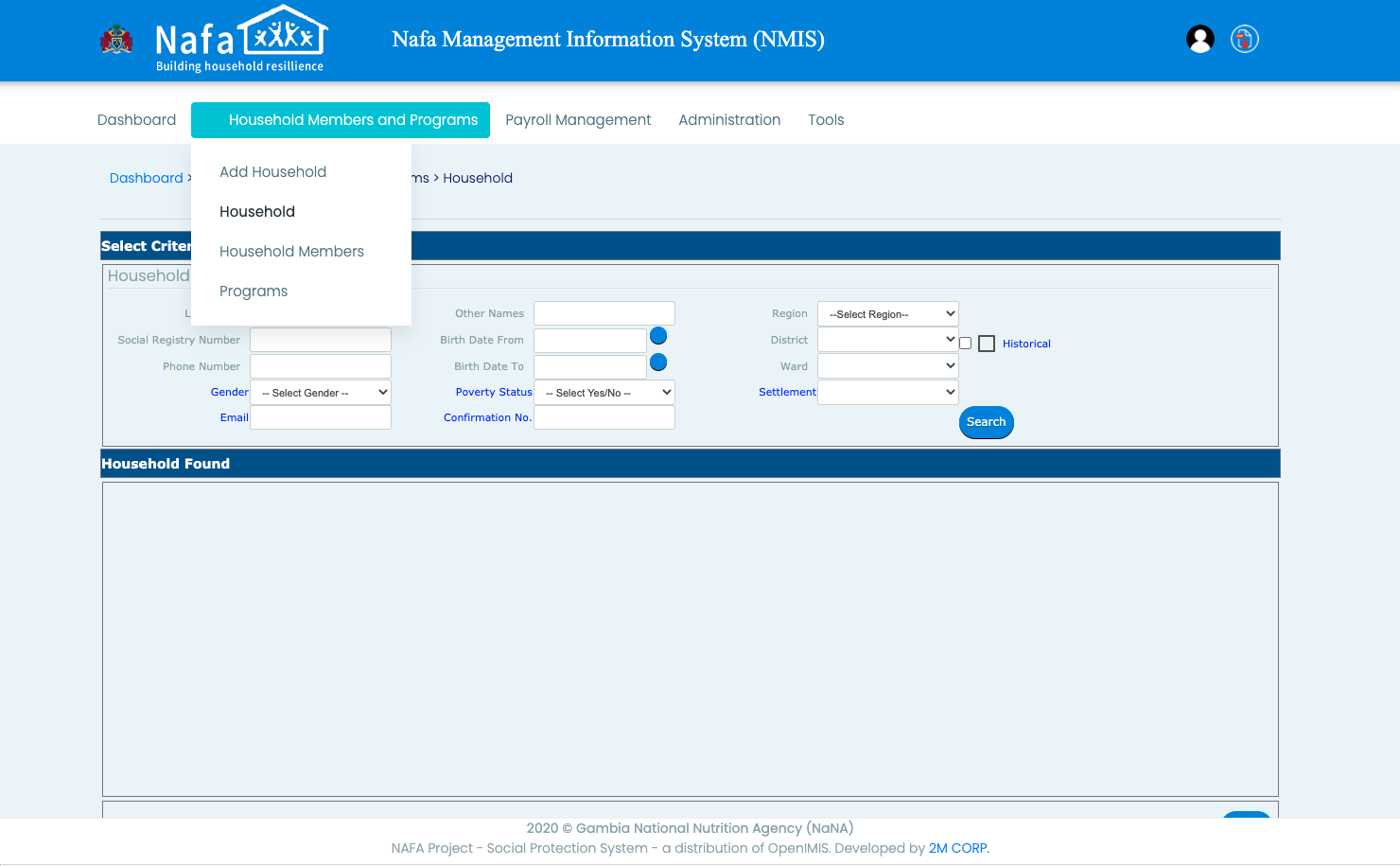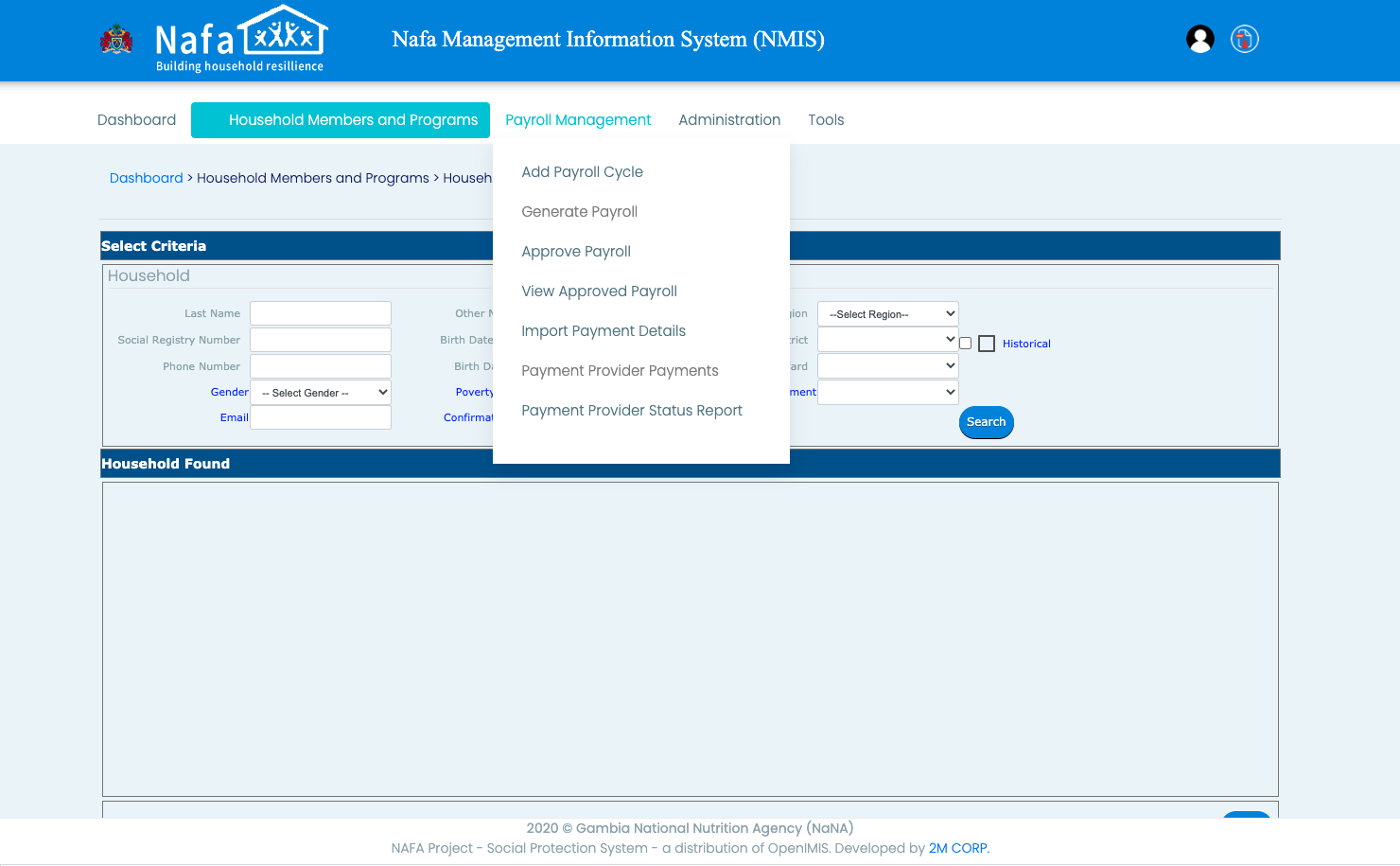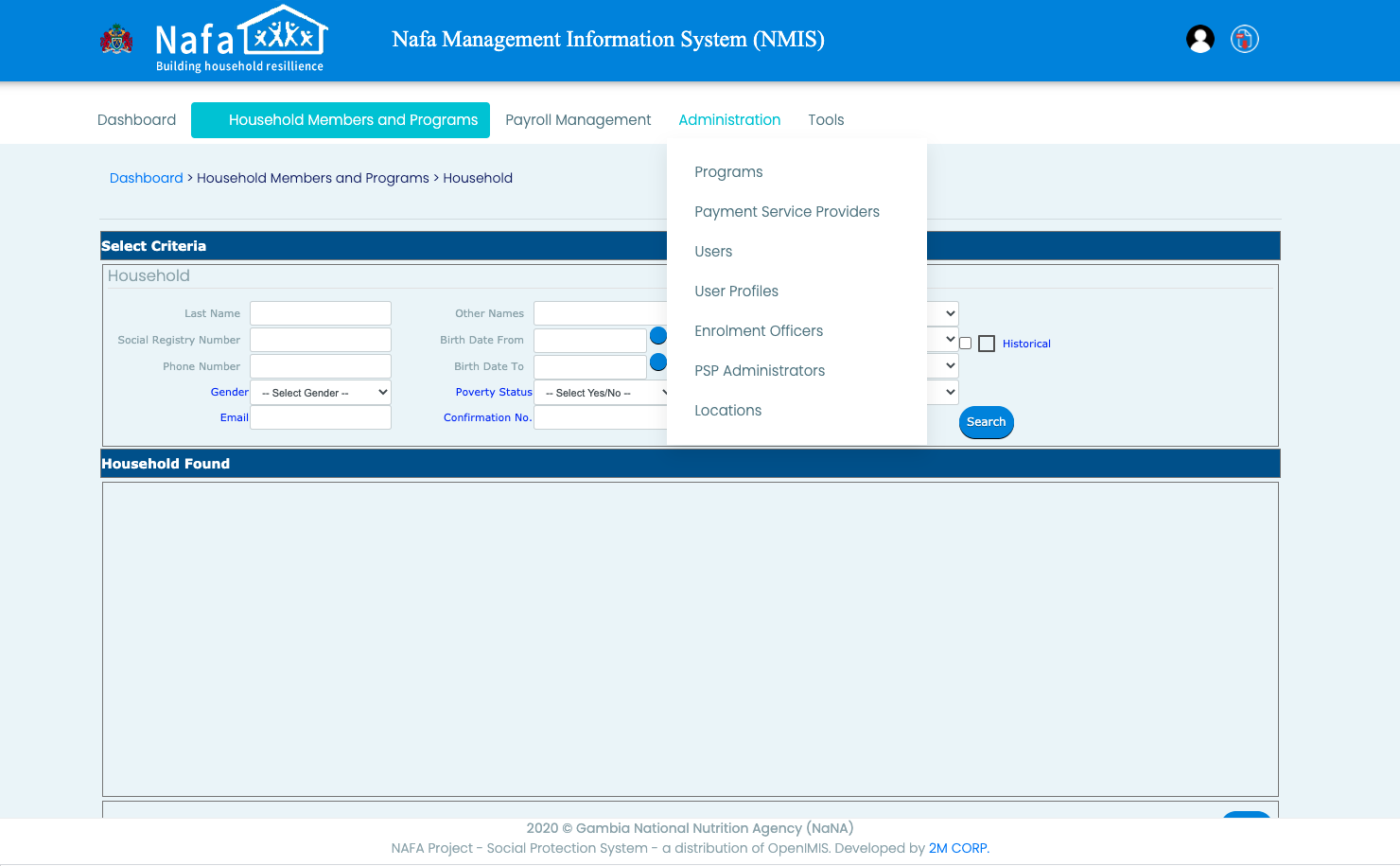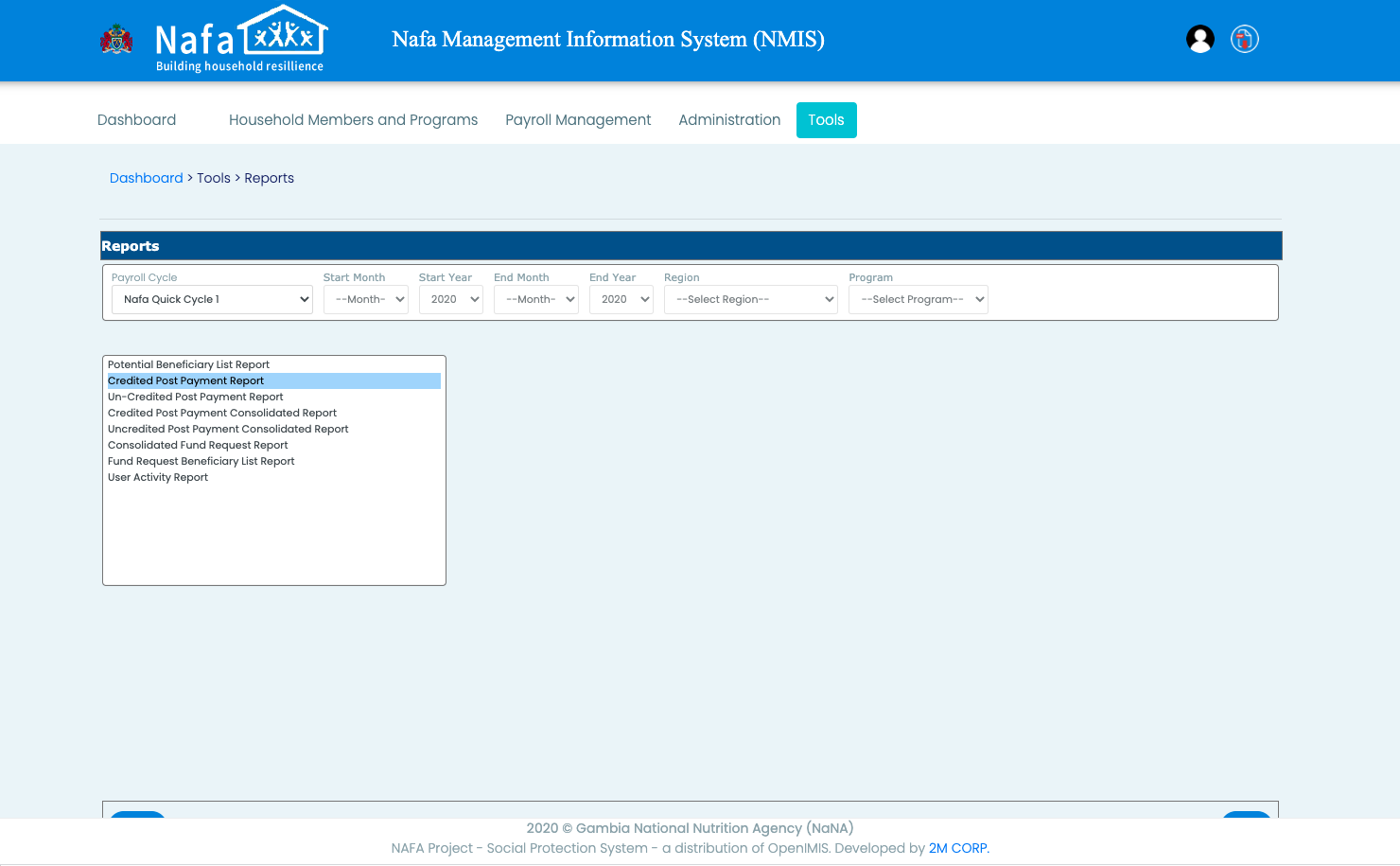Summary
openIMIS has been deployed in the Gambia as a Management Information System (MIS) for managing cash transfers as part of the Government of Gambia’s COVID-19 response.Background
The Government of The Gambia has received IDA funding equivalent to US$30 million to implement ‘The Gambia Social Safety Net Project (GSSNP)’. The project has become effective on the 9th of September 2019 and is expected to close on 29th March 2024.
The original Project Development Objective (PDO) was “to improve the coordination of social assistance activities and increase inclusion of the extreme poor in the Nafa Program”. To enable the Government to respond to COVID-19, this PDO has however been revised to “improve the coordination of social assistance activities and increase access to the Nafa program for rural households.” The Project consists of three components.
Component 1: Development of Co-ordination Mechanisms for the Social Assistance Sector. This component will provide mechanisms and systems to help the coordination of social assistance activities in The Gambia through two subcomponents.
Component 1A: Support to the establishment of a Social Protection Secretariat (SPS). SPS’s mandate will be to provide leadership and coordination across the totality of social protection efforts in The Gambia.
Component 1B: Support for the establishment of a Social Registry to provide robust data on key household characteristics to facilitate common assessment and eligibility determination for social assistance programmes. It will provide a platform for improved coordination and reduced fragmentation among programs.
The component would be implemented by the Secretariat, housed in the Office of the Vice President.
Component 2: The Nafa Program of cash transfers and social and behavioral change communication (SBCC) for the extreme poor.
The Nafa program was intended to provide an unconditional cash transfer for three years, initially in the poorest 20 districts in The Gambia, targeted to extreme poor households, covering approximately 15,606 extremely poor households (170,000 individuals). This equates to approximately 40 percent of the extreme poor households in The Gambia. The regular revenue provided to extreme poor households is aimed at both increasing short-term consumption of essential goods and services, and enabling longer-term investments in human and productive capital. This program is being adapted to respond to COVID-19 and the new, temporary cash transfer is being called Nafa Quick. The Nafa Program shall be understood to encompass both the regular Nafa and Nafa Quick.
Tailored SBCC that accompanies the cash transfer will provide information to beneficiaries and non-beneficiaries to encourage investments that can bolster human capital (especially maternal and child health and nutrition education, adolescence education and family planning, parenting and gender-based violence) and productive capital (especially savings, entrepreneurship and agriculture) to break the inter-generational cycle of poverty.
The Nafa program (component 2) will be implemented by three government partners; The National Nutrition Agency (NaNA) as the lead implementing agency and will establish performance contracts with the Department of Community Development (DCD) of the Ministry of Lands and Regional Government and the Department for Social Welfare (DSW) of the Ministry of Women, Children and Social Welfare for the activities that fall within their mandates.
Component 3: Project Management and Capacity Building This component will finance the costs associated with the management of the project and capacity building activities.
A Management Information System (MIS) for the Nafa Program (component 2) is needed to manage the intake of beneficiaries, delivery of benefits to them, generate payment lists, and other beneficiary management features, as well as to provide clear, simple reports on these activities.
Use of openIMIS
2M Corp, a Gambian software development is responsible to design and develop the registration, enrolment and payment modules of the MIS for the Nafa Program and to provide technical assistance to National Nutrition Agency (NaNA) to manage and operate the MIS. Specifically, 2M Corp was tasked with the:
Design and develop the household registration, enrolment, and payments modules of the MIS for the Nafa Program
Development of user and technical manuals, standard procedures, and guidelines for maintaining the database related to the developed modules
In addition to the software development, 2M Corp is also responsible for:
Providing end-user training to the project implementation teams
Carry out corrective and adaptive maintenance to improve the software application when necessary during the contracting period
Functional Scope
Functional Area | Functionality |
Household Registration | Definition of a Household Registration Period (or Targeting Period) |
Provide for bulk import of Excel datasets | |
Provide for Manual Entry of a household using a web form | |
Allow for registering self-exclusion during registration | |
Provide for the use of a CAPI (e.g. KoBo Toolbox, ODK) tool for household registration | |
Duplication Analysis and Adjudication – allow flagging duplicates | |
Flagging of the Cash Recipient and/or Alternate | |
Supervisory closure at national level of the household Registration | |
Produce a potential beneficiary list report. | |
Enrolment (Data cleaning and Enrolment of beneficiaries with payment service provider) | Setting up Payment Service providers in the MIS |
Produce enrolment lists to be shared with PSP | |
Receive Enrolment Data from PSP, including Pay points and Payment Mechanisms | |
Import enrolment data (Pay Point) through the online Portal | |
Generate Enrolment Report for approval & Supervisory closure of the Enrolment process | |
Payments (preparation and disbursement of beneficiary payments) | Definition of payment parameters, e.g. Benefit Type, value, frequency of transfers, payment cycles, |
Produce Payrolls – downloadable Data files but read-only | |
Supervisory approval at the national level of payroll | |
Generate funds request report based on the Payroll, & target groups, payment cycles (entitlement amounts and arrears). | |
Transfer Payroll to PSP (manually, Auto-API) | |
Receive Payment reconciliation files from PSP | |
Upload of payment reconciliation files for all credited and non-credited households. Reconciliation files should include reason for non-credits (e.g., self-exclusion, absent, etc) | |
Produce post-payroll Reports | |
a. Credited Households Report. | |
b. Un-credited Households Report. (Enrolled households not credited). | |
c. Three (3) Missed Payments Report | |
Supervisory closure of post-payroll exceptions and payroll period at the national level | |
Mobile Tool for payments administration compatible with PSP technology, with support for offline transactions and the ability to capture the Authentication Approach (e.g., Community verification, National ID or any other ID, or possibly capture photo of cash recipient) and additional data that may be needed from the household | |
Generation of Unique Payment Transaction Numbers/Voucher that can be traced back to the household |
Design
We maintained use cases related to cash transfer and extended the design to suit the program needs. This includes but not limited to the following;
Household considered as family or groups in the health scheme
Health Services Provider such as hospitals and in our case considered as the Payment Service Providers
Products which was ported to hold the program related attributes. The cash transfer application developed allows an institution to have more than one cash transfer project running concurrently with the possibility of the following;
A household member can be in different programs
A household member can be restricted to only 1 program
A program has a definition of start and end period, household members cannot be added to a program when it ends nor records associated with the program be editable.
A maximum number of households to a program can be defined
The amount to be transferred to the household is captured at a program level
A Payroll Module was introduced with the following use cases;
Define payroll cycle for a program and period to be covered
Generate Payroll based on a program and region associated with it.
Review and approve Payroll
Export Payroll data to be shared with Payment service providers
Bulk update of the payment information by the payment service providers to report payments made and those not paid for reporting purposes
Closure of a payroll cycle and prevention of any additional changes
Reporting: we used the same reporting module and created our reports to suit our needs.
Actors use case diagram
Use cases workflow
Deployment and Go LIVE
The platform is deployed on Microsoft Azure with SQL Server enterprise with SSRS enable. The dashboards are generated using the mobile reporting features of the SSRS.
Data Cleaning and Importation
The system was to rely on an existing data provided by the National Disaster Management Agency of the Gambia. This data was collected during the rice distribution to the COVID-19 emergency response containing only few variables (Beneficiary name, region, district, settlement, telehpone # and number of household members). The data was cleaned to remove duplicates. A registration form was built using Kobo toolbox allowing the team to collect the missing data and also registered individuals that were not registered initial. An additional use case is built within the platform to take this into consideration; update the missing fields and create new records and created an exception flow for the payroll generation considering the payroll has already been generated and approved for that cycle.
.png?version=1&modificationDate=1600940315493&cacheVersion=1&api=v2)
.png?version=1&modificationDate=1600940178406&cacheVersion=1&api=v2)
